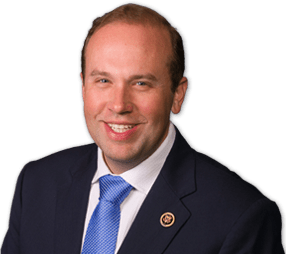Press Releases
Sen. Lee, Rep. Smith Lead Letter to CDC on Face Mask Guidance for KidsWASHINGTON – Sen. Mike Lee (R-UT) and Rep. Jason Smith (R-MO) today led 30 of their colleagues in sending a bicameral letter to the Centers for Disease Control and Prevention (CDC) requesting information on how the agency determined its guidance for children aged two years and older to wear face masks to mitigate the spread of COVID-19. The Members of Congress wrote in part: “The implementation of these recommendations has had serious consequences for some Americans. Multiple parents of young children have been removed from flights, and in some instances, permanently banned, from future travel on the airline they were flying due to their toddler’s refusal to wear a mask. These unfortunate events have occurred despite the parents’ best attempts to have their child cooperate with the mask requirement, which is a struggle millions of parents have faced this past year. For parents of children with disabilities, compliance has proved almost impossible, resulting in increased social isolation and negative mental health consequences.” The full text of the letter can be found here and below. April 22, 2021 Rochelle Walensky, MD, MPH Dear Director Walensky, We write to request that you provide us with information on how the Centers for Disease Control and Prevention (CDC) came to its conclusion that children two years and older should wear face masks to mitigate the spread of COVID-19. The CDC first put this recommendation forward in March 2020 and since then, many states and localities have based their mask mandate age requirements on it. Additionally, President Biden’s January 21, 2021 Executive Order required that all airports, commercial aircrafts, trains, intercity bus services, and other forms of public transportation comply with the CDC’s guidelines on mask wearing and the CDC subsequently put forward a corresponding mandate that only exempted children under the age of two years. The implementation of these recommendations has had serious consequences for some Americans. Multiple parents of young children have been removed from flights, and in some instances, permanently banned, from future travel on the airline they were flying due to their toddler’s refusal to wear a mask. These unfortunate events have occurred despite the parents’ best attempts to have their child cooperate with the mask requirement, which is a struggle millions of parents have faced this past year. For parents of children with disabilities, compliance has proved almost impossible, resulting in increased social isolation and negative mental health consequences. The CDC’s mandate that children as young as 2-years-old must wear facemasks is among the most stringent face mask age requirements in the world. For example, in Switzerland, children under the age of 12 do not have to wear a mask. In the UK and France, children under the age of 11 are exempt. And in Italy, the exemption applies to children under the age of six. The significantly lower age requirement for mask wearing in the United States raises questions about the susceptibility of young children to COVID-19, the rate at which they transmit the disease, and their developmental ability to comply with mask requirements. Within the United States, children younger than age five account for approximately six percent of the population but only two percent of total coronavirus cases. Further, according to the Association of American Medical Colleges, “Several studies have found that children transmit the virus, but perhaps not as often as adults, especially in younger age groups.” National Institute of Allergy and Infectious Diseases Director Dr. Anthony Fauci made a similar assessment in November 2020, stating, “If you look at the data, the spread among children and from children is not really very big at all, not like one would have suspected.” One review of scientific literature on COVID-19 infections showed “evidence for significantly lower susceptibility to infection for children aged under 10 years compared to adults given the same exposure.” Another review that focused on contact-tracing studies and population-screening studies found “preliminary evidence that children and young people have lower susceptibility to SARS-CoV-2, with a 56% lower odds of being an infected contact.” A different analysis of 32 studies indicated that “children and adolescents younger than 20 years had 44% lower odds of secondary infection with SARS-CoV-2 compared with adults 20 years and older; this finding was most marked in those younger than 10 to 14 years.” Given evidence indicating the lower likelihood of young children to contract and spread COVID-19 as well as the significant, negative impact of the CDC’s mask guidelines on the lives of Americans with young children, we request that you respond to the following questions:
We look forward to receiving your response by May 5, 2021. ### |


